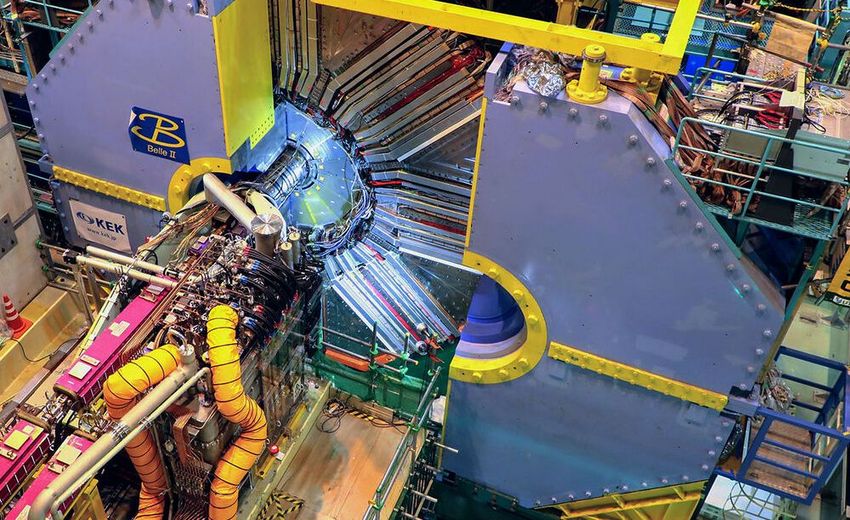
B mesons (pairs of b quarks) and their antiparticles are produced during particle collisions in the Belle II detector. The experiment aims to find out why there is an excess of matter in the universe (Photo: Shoto Takahashi - KEK/Belle II)
Quantum entanglement: do elementary particles have telepathic abilities?
Café & Kosmos on July 30, 2025

According to quantum theory, particles do not have a definite state, e.g. in terms of their spin, polarization or flavour (color) - only relative probabilities. Only when a measurement is carried out does the particle “decide” on a state.
This property becomes really exciting when two particles are in a common state, e.g. because they were created together. This is known as quantum entanglement. In this case, the measurement of one particle influences the state of the other - regardless of how far apart the particles are in the universe.
Vanessa Geier and Dr. Hans-Günther Moser explain what this ghostly long-distance effect is all about using the example of the Belle II experiment, in which a special type of particle is produced: B mesons and their antiparticles.